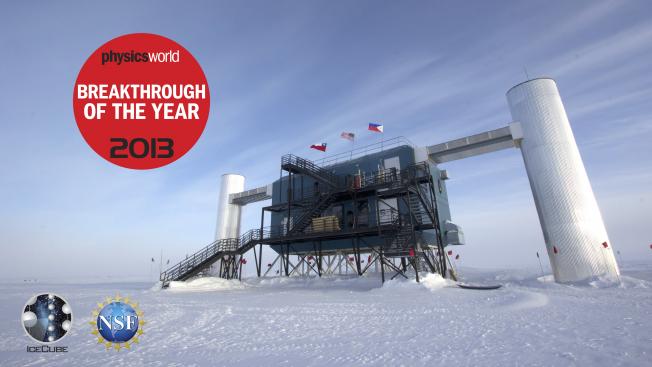The Anisotropy of the Ultra-High Energy Cosmic Rays
ArXiv astro-ph/0103085 (2001)
Abstract:
Ultra-high energy cosmic rays (UHECRs) may originate from the decay of massive relic particles in the dark halo of the Galaxy, or they may be produced by supermassive black holes in the nuclei of nearby galaxies. The anisotropy in the arrival directions is studied in four dark halo models (cusped, isothermal, triaxial and tilted) and in four galaxy samples (galaxies intrinsically brighter than Centaurus A within 50 and 100 Mpc, and brighter than M32 within 50 and 100 Mpc). In decaying dark matter models, the amplitude of the anisotropy is controlled by the size of the Galactic halo, while the phase is controlled by the shape. In the northern hemisphere, the amplitude is about 0.5 for cusped haloes, but falls to roughly 0.3 for isothermal haloes. The phase points in the direction of the Galactic Centre, with deviations of up to 30 degrees possible for triaxial and tilted haloes. The effect of the halo of M31 is too weak to provide conclusive evidence for the decaying dark matter origin of UHECRs. In extragalactic models, samples of galaxies brighter than Centaurus A produce substantial anisotropies (roughly 1.8), much larger than the limits set by the available data. If all galaxies brighter than M32 contribute, then the anisotropy is more modest (roughly 0.5) and is directed toward mass concentrations in the supergalactic plane, like the Virgo cluster. Predictions are made for the southern hemisphere station of the Pierre Auger Observatory. If the UHECRs have a Galactic origin, then the phase points towards the Galactic Centre. If they have an extragalactic origin, then it points in the rough direction of the Fornax cluster. This provides an unambiguous discriminant and requires about 350-500 events at South Auger.Introduction to Big Bang cosmology
NATO SCI SER II MATH 34 (2001) 219-280
Abstract:
These lectures provide an introduction to the physics of the standard Big Bang cosmology. We emphasize the observational basis for constructing general relativistic world models and retracing the thermal history of the universe. Physical processes during the radiation-dominated era, such as the thermalization of the relic background radiation and the synthesis of the light elements, are discussed in detail.Introduction to Big Bang Cosmology
Chapter in Recent Developments in Particle Physics and Cosmology, Springer Netherlands (2001) 219-280
Introduction to Big Bang Cosmology
Chapter in Recent Developments in Particle Physics and Cosmology, Springer Nature (2001) 219-280



